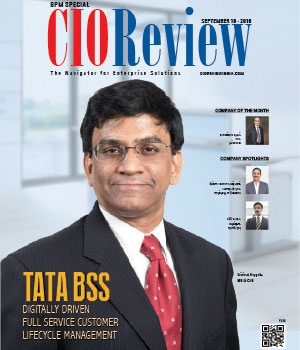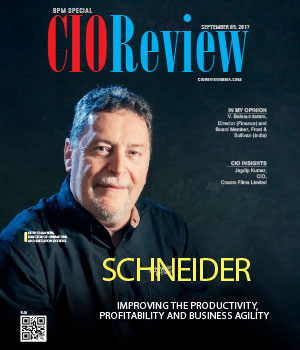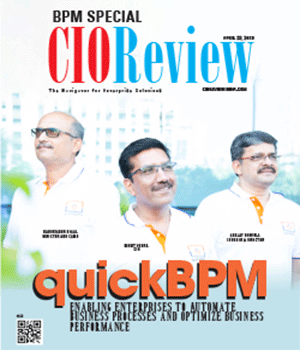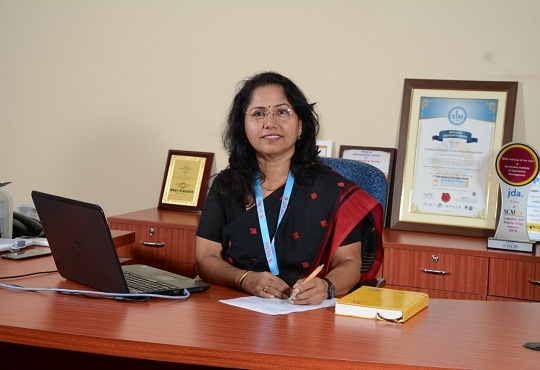
First Steps to Globalizing Your Business
Neil Hampshire, CIO, ModusLink | Monday, 18 September 2017, 12:42 IST
 As companies become more successful, it is only a matter of time before management looks at other markets across the globe that their goods could be sold in. Many approach this next step in a company’s growth by maintaining business as usual, expecting the only hurdles to be a few extra shipping costs and a simple currency conversion. Unfortunately, they soon realize that with global expansion comes a whole new world of regulations, networks, languages and customs—that if not managed correctly and respectfully—can bring global aspirations to a quick halt.
As companies become more successful, it is only a matter of time before management looks at other markets across the globe that their goods could be sold in. Many approach this next step in a company’s growth by maintaining business as usual, expecting the only hurdles to be a few extra shipping costs and a simple currency conversion. Unfortunately, they soon realize that with global expansion comes a whole new world of regulations, networks, languages and customs—that if not managed correctly and respectfully—can bring global aspirations to a quick halt.
When a company decides to expand beyond its home country, it opens itself up to many challenges—new shipping routes, customs, currency, taxes and consumer standards to name a few—and these can be overwhelming to take on all at once. In fact, there are several aspects to master in order to successfully manage a global supply chain—much more than we have space to cover here—but let’s take a look at the most important aspects as a starting point:
Currency
While this might sound basic, the ability for your e-commerce solutions to be able to accept a variety of currencies and local payment methods around the globe is critical for success. Being able to accept, exchange and properly transfer money between countries, while staying within the bounds of global trade regulations, can be overwhelming for emerging brands. Solution providers operating on a global scale can easily plug-and-play this functionality into an existing e-commerce shopping cart, saving you the hassle, time and money of retooling your current site for each currency.
Taxes
Each country has its own set of Value-Added Taxes (VAT) as well as import and export tariffs that, if not managed correctly, can bring your entire supply chain to a grinding halt. Without a trusted partner who has the knowledge to maneuver through each region’s specific tax laws, you could find yourself wasting valuable time negotiating tax hurdles instead of bringing your product to market on time.
Local Customs
In addition to taxes, there is a myriad of cultural differences that companies must navigate in order to keep from confusing or, even worse, possibly offending a new group of consumers. Everything from product names, to labels and e-commerce sites needs to be properly translated, vetted and signed-off on by the company and by regional representatives to make sure that both sides are happy and that the product will present and sell effectively.
Packaging
Each country comes with its own set of labeling requirements and disclosures. Certain countries have requirements for packaging to include the cost of the item, while others allow it to be on a separate label. Thus, even though it may seem like it should, things don’t get any simpler when it comes to labeling. Local stores and chains have specific UPC and labeling requirements not only for displaying the product on shelves, but even for them to be able to accept product shipments in the first place. Taking the time to learn each and every retailer requirement can be an unnecessary expenditure of time and money for a brand. Instead, pairing with a 3PL provider with a proven track record in the region you are pursing can streamline the process and keep hiccups from occurring in the last steps of the supply chain.
Delivery
While worldwide carriers offer a great array of transport and logistics services, the ability to coordinate with local transport and warehousing assets can make a tremendous difference. By using local transport and warehousing assets, companies can have additional products in country at the time when a retailer or e-commerce customer requires it rather than having to spend days or weeks to get additional inventory in country. A truly global 3PL provider can leverage existing relationships with local providers to maximize efficiencies in local shipping and storage through economies of scale by leveraging multiple brands’ inventories to secure lower rates. These savings can then be passed down the chain to reduce the cost of supply chain and logistics operations for each individual brand.
Recycling
Countries vary in the materials they allow in products, as well as in the waste streams. While one country might have established regulations for e-waste recycling and recovery, others may require those same materials to be landfilled, and with regulations come standards. Specifically, advisory signage and labeling must be incorporated not only into packaging but often directly onto the devices themselves. When companies have a partner that is familiar with each and every region’s material disclosure and disposal regulations, and has the ability to customize packaging and products at a regional level, companies can prevent having confusing and overcrowded information on packages that try to convey all the applicable regional requirements on a global level. Last minute customization by a capable 3PL allows for product and packaging to present a clean aesthetic, while still adhering to regional regulations by including only regionally-relevant information.
Even if a brand manages to anticipate and properly prepare for the must-know facets of the global supply chain listed above, these are simply the tip of the iceberg when it comes to expanding a brand’s global presence. The main piece of advice for any company looking to expand globally is to carefully examine each situation and plan accordingly. There may be areas of the world and specific markets that make sense to start with and expand outward from. While it’s true that every company and every product is different, the fact remains that you have one chance to globalize successfully—so make sure you start with the strategy that’s correct for your organization—not one that’s rushed into.
CIO Viewpoint
Enabling An Effective Workforce With The Proper...
By Daniel M. Horton, CIO, Sallyport Global
Three Ways To Build A Gmail Security Conscious...
By Niraj Ranjan Rout, Co-founder & CEO, Hiver
By Sreenivas Pamidimukkala, CIO, International Paper
CXO Insights
Looking towards Operations Management: What...
By Dr. Vandana Sonwaney, Director, SIOM
Strategic Implementation And Control
By SURESH.V. MENON-PRINCIPAL CONSULTANT SIX SIGMA & STRATEGIC MANAGEMENT, ADVISORY (BUSINESS EXCELLENCE)
Grand Strategies Used In Strategic Management









